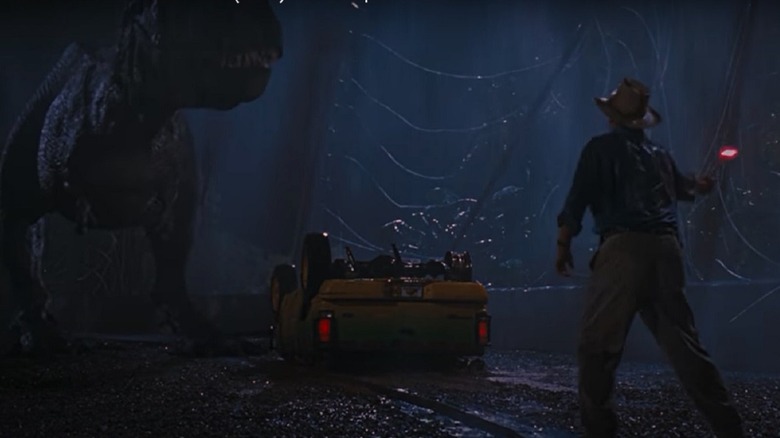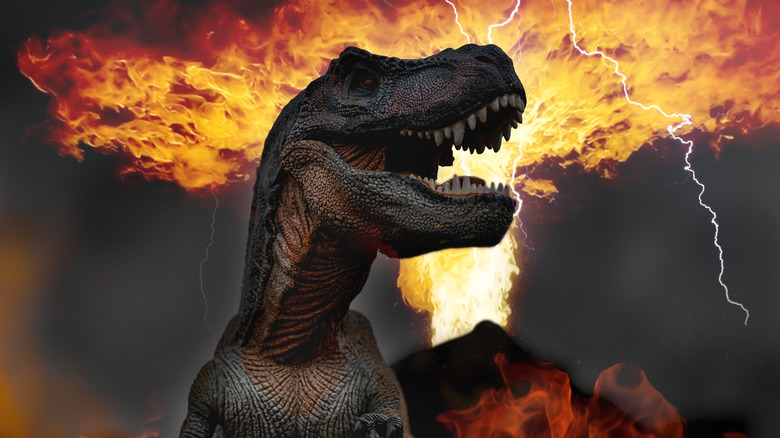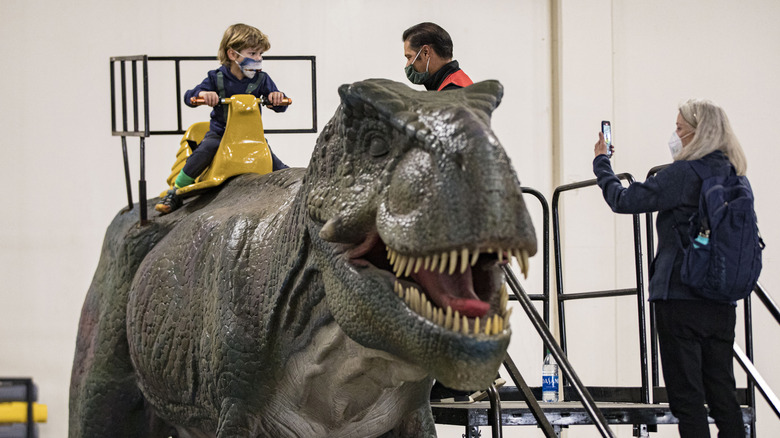Could A T. Rex Really Only See Things That Were Moving?
It's one of the most memorable scenes in one of the most memorable movies of the 1990s. Beware: Spoilers for a 30-year-old film are coming. In the original 1993 "Jurassic Park," there's a harrowing scene where two young kids (Lex and Tim) are trapped in an overturned vehicle while a T. rex is sniffing about. Dr. Grant warns the children to hold still, because the T. rex's vision is based on movement; if they held still, the beast wouldn't be able to see them. Following a mishap with a flashlight, another adult, Dr. Malcolm, saves the day by distracting the animal with a flare.
ScreenRant points out that more than one aspect of this film is based on scientific wishful thinking than actual science. So, it stands to reason that the filmmakers may have taken some shortcuts with the truth for the sake of making a compelling scene. And, as it turns out, when it comes to T. rex's vision, they took basically all of the shortcuts.
T. rex's place on the evolutionary ladder
For a period of about 165 million years, dinosaurs were the dominant species on Earth, as USGS notes. That's a long time to rule a planet, but then, about 66 million years ago, an asteroid strike wiped almost all of them out (per LiveScience). At the end of their period of dominance, they coexisted with a few species of mammals and birds, which had themselves evolved from certain dinosaurs a hundred million or so years earlier, according to Nature.
The reason for bringing all of this up is that there is no way to directly test a T. rex's eyesight. None of their eyes remain for scientists to study, and instead, researchers must rely on educated guesswork. Factors they consider are the general shape of the T. rex's head, as well as the vision of similar extinct reptiles. In a famous experiment, a scientist used the eyes of crocodiles, eagles, and even a chicken.
The T. rex could see even better than you can
Not long after watching "Jurassic Park," Professor Kent Stevens at the University of Oregon, created an experiment to see if the premise of the movie's most memorable scene was true, according to Today I Found Out. Specifically, he used the shape of the T. rex's skull and inserted taxidermied eyeball specimens of a chicken, eagle, and crocodile. He then tested their vision using a laser pointer and a glass plate. As Mental Floss explains, Stevens used a mechanism to test "whether a given probe would be visible, based on whether there is a clear, unobstructed view of the pupil along a line of sight."
Long story short: The T. rex did not need an object to be moving for him or her to see it, and in fact, the beast's vision was even better than that of some hawks. In comparison to the vision of humans (in which birds routinely best us), the T. rex has us beat because the dinosaur's vision was likely 13 times better than that of modern Homo sapiens.


